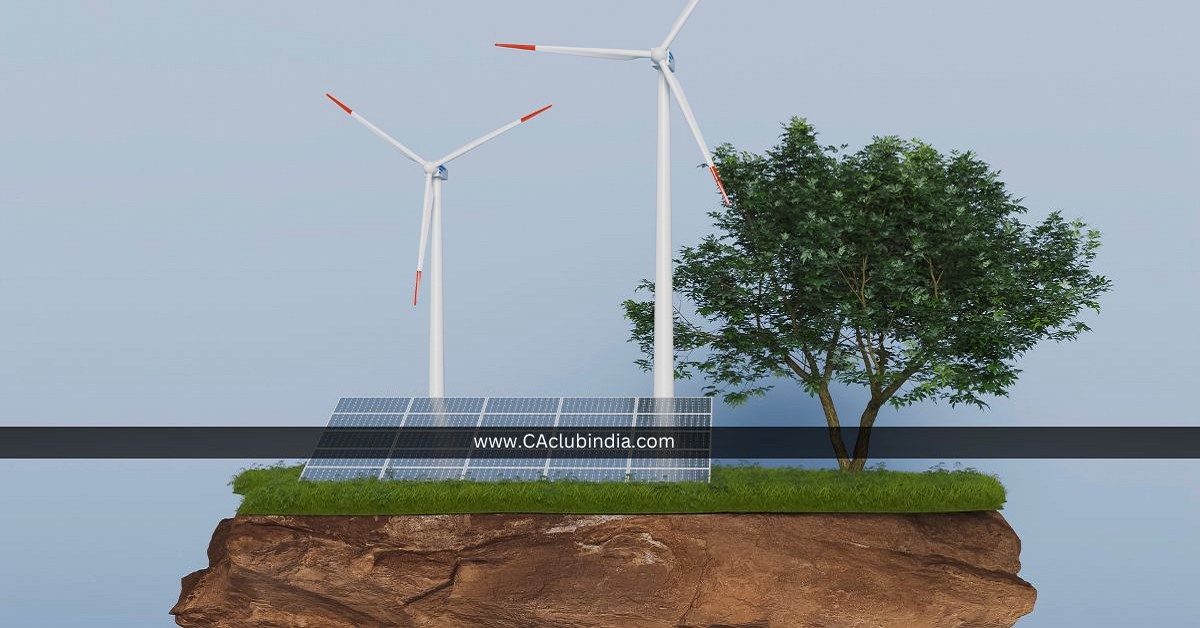In a major boost to India's clean energy transition, Union Minister for New & Renewable Energy Pralhad Joshi on Monday announced that the recent GST reduction on renewable energy equipment could save investors between Rs 1 lakh crore to Rs 1.5 lakh crore by 2030.
The announcement came on the first day of implementation of the GST rate cut, which the GST Council, comprising the Centre and states, decided to roll out from September 22, coinciding with the beginning of the Navratri festival. The GST on renewable energy equipment has been reduced from 18% to 5%, a move welcomed by industry stakeholders and consumers alike.

Big Boost to India's 500 GW Renewable Energy Target
Speaking at the sidelines of the CII 6th International Energy Conference, Joshi highlighted that the tax relief will accelerate India's efforts to achieve its ambitious 500 GW renewable energy capacity target by 2030. He credited Prime Minister Narendra Modi for the reform, saying:
"I thank Prime Minister Narendra Modi for cutting GST on renewable equipment from 18% to 5% on the occasion of Navratri. This move will directly benefit investors and consumers and contribute to India's clean energy journey."
According to the Ministry of New & Renewable Energy (MNRE), India plans to add about 300 GW of renewable capacity by 2030. Even a modest 2-3% reduction in costs could release investment potential worth Rs 1-1.5 lakh crore.
Consumer-Level Savings
The GST cut will also bring tangible savings for households and farmers:
- Rooftop Solar (PM Surya Ghar: Muft Bijli Yojana): A 3 kW rooftop solar system will now cost Rs 9,000-10,500 less.
- Farmers under PM-KUSUM: Around 10 lakh solar pumps will be cheaper, saving farmers nearly Rs 1,750 crore in total.
So far, 20 lakh households have already benefited from rooftop solar installations under the Surya Ghar scheme.
India's Clean Energy Progress
At the conference, Joshi underlined India's progress toward the renewable roadmap set at COP26 in 2021, where Prime Minister Modi first unveiled the 500 GW target.
- Over 50% of India's installed power capacity now comes from non-fossil fuel sources - achieved five years ahead of schedule.
- India has already achieved 252 GW of renewable capacity, crossing halfway to the 500 GW target.
- In a recent auction, Madhya Pradesh secured the lowest-ever tariff for solar with battery storage at just Rs 2.70 per unit.
The government has also planned transmission systems for 537 GW of renewable capacity by 2030.
Global & State-Level Cooperation
Madhya Pradesh Chief Minister Mohan Yadav, who joined the event virtually, reaffirmed the state's commitment to renewable projects including solar, wind, and pump hydro.
Internationally, Maldives Minister Muaviyath Mohamed said his country is working with the International Solar Alliance (ISA) and Indian companies to achieve 33% renewable electricity generation by 2028.
Industry leaders from CII and Tata Power emphasized that collaboration between the Centre and states will be key to achieving stable, sustainable, and balanced growth in wind, solar, and storage.







 CAclubindia
CAclubindia
